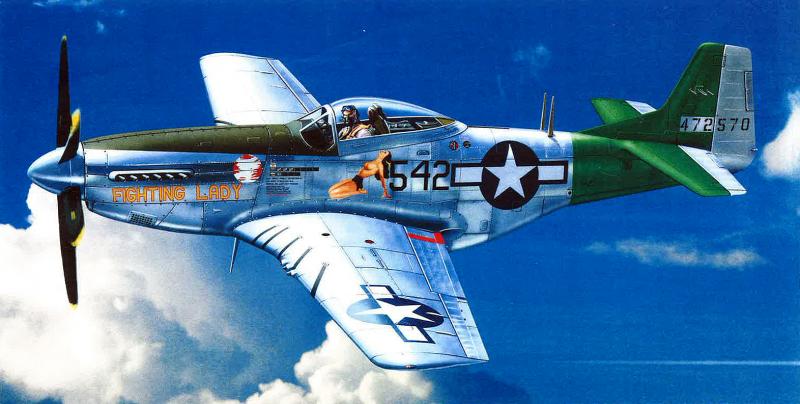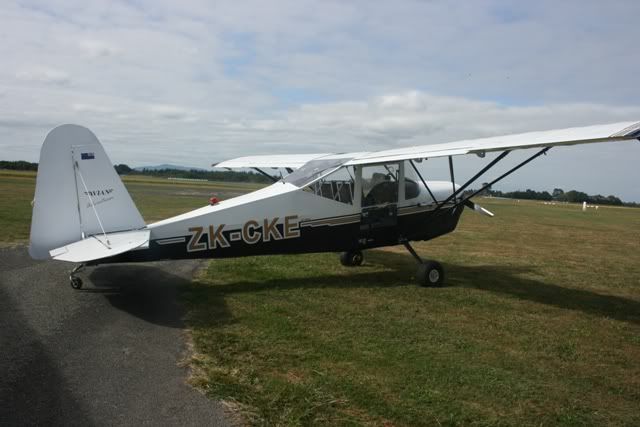|
|
Post by nuuumannn on Dec 30, 2022 14:18:14 GMT 12
Germany has signed its agreement with Washington to formally purchase the type and even Czechia is buying into it instead of buying upgraded Gripens. The wee accident in Texas is making waves as LM has stated that a small number - no figure - have been grounded "until January" according to press reports, and Israel is doing the same to some of its examples. This comes after Martin Baker revealed a manufacturing fault in a range of its seats, which saw the Pentagon ground almost all its F-35s earlier this year, but that wasn't a fault of the airframe. The press isn't done with the F-35 yet... The thing that most people miss regarding the F-35 is how difficult it was to do what the specification wanted. A common airframe for three different operational variants, one of which is a short take-off vertical landing replacement for the Harrier with supersonic capability. It also has to be stealthy, and network connected to the most modern electronic battlespace environment. Not an easy thing to do incorporating all that stuff into one airframe, something that quite possibly would not have been achievable without international partnership, and that is extensive - Britain alone contributes 30 percent of componentry to existing airframes. Look at Boeing's X-32 for the failed attempt at doing all this, also the fact that Russia stopped the Yak-41 programme hints at the difficulty and cost of producing a service ready supersonic STOVL strike fighter. The other factor most people, including the vast majority of journalists who write about the aircraft, forget is the Concurrency program. Since Robert MacNamara imposed the concept, every major US defence (defense) programme has been subject to Concurrency. This is the concept of putting the equipment into service as rapidly as possible after development and ironing out all the bugs in service as discovered by those who will actually operate the thing, thus circumventing time and effort (read Billions) in R&D before it enters service. The idea was introduced in the 60s because of the growing sophistication of modern fighters following the F-4. Every major US combat aircraft programme from the F-14 has had concurrency applied, theoretically saving the USA taxpayer money and getting these aircraft into service in a timely fashion. Sure, the F-35 is expensive and has developmental issues, but as mentioned almost 20 foreign operators (and more to come) mean it is a significant aircraft that offers capability beyond anything else in service at present.  DSC_0278 DSC_0278 |
|
|
|
Post by madmac on Dec 31, 2022 15:50:23 GMT 12
I would note that any discussion of Germany's buy of the F35 it has a lot to do with the fact that free fall nuclear weapons have been cleared for the F35 where as Germany would have had to fund that development for pretty much any other airframe.
People involved in the F35 development have described it as 1 operating system running in 3 different airframes.
I would also ponder the effect of sustained operations, the original concept was I seem to recall was about day 5 of a full on war that the airdefences would have been sufficiently degraded to allow use of external stores, this would also apply to the state of the RAM (& with it allow deferral of maintenance). Weather this still applies in a naval focused war, is anyones guess.
|
|
|
|
Post by richard1098 on Dec 31, 2022 19:53:49 GMT 12
Germany has signed its agreement with Washington to formally purchase the type and even Czechia is buying into it instead of buying upgraded Gripens. The wee accident in Texas is making waves as LM has stated that a small number - no figure - have been grounded "until January" according to press reports, and Israel is doing the same to some of its examples. This comes after Martin Baker revealed a manufacturing fault in a range of its seats, which saw the Pentagon ground almost all its F-35s earlier this year, but that wasn't a fault of the airframe. The press isn't done with the F-35 yet... The thing that most people miss regarding the F-35 is how difficult it was to do what the specification wanted. A common airframe for three different operational variants, one of which is a short take-off vertical landing replacement for the Harrier with supersonic capability. It also has to be stealthy, and network connected to the most modern electronic battlespace environment. Not an easy thing to do incorporating all that stuff into one airframe, something that quite possibly would not have been achievable without international partnership, and that is extensive - Britain alone contributes 30 percent of componentry to existing airframes. Look at Boeing's X-32 for the failed attempt at doing all this, also the fact that Russia stopped the Yak-41 programme hints at the difficulty and cost of producing a service ready supersonic STOVL strike fighter. The other factor most people, including the vast majority of journalists who write about the aircraft, forget is the Concurrency program. Since Robert MacNamara imposed the concept, every major US defence (defense) programme has been subject to Concurrency. This is the concept of putting the equipment into service as rapidly as possible after development and ironing out all the bugs in service as discovered by those who will actually operate the thing, thus circumventing time and effort (read Billions) in R&D before it enters service. The idea was introduced in the 60s because of the growing sophistication of modern fighters following the F-4. Every major US combat aircraft programme from the F-14 has had concurrency applied, theoretically saving the USA taxpayer money and getting these aircraft into service in a timely fashion. Sure, the F-35 is expensive and has developmental issues, but as mentioned almost 20 foreign operators (and more to come) mean it is a significant aircraft that offers capability beyond anything else in service at present. DSC_0278 DSC_0278 The amount of money that will be avialable for upgrade programs will keep things that way for quite a while. New generation adaptive cycle engines for the F-35, GE's XA100 and P7W's XA101, are already in testing. |
|
|
|
Post by Mustang51 on Dec 31, 2022 20:05:17 GMT 12
Betting we get the extra aircraft in the March review to bring total at or very near 100
|
|
|
|
Post by Bruce on Jan 3, 2023 20:42:19 GMT 12
The F35 is obviously such a terrible aircraft that the USAF has just ordered another 398 of them...
|
|
|
|
Post by Antonio on Jan 3, 2023 21:34:43 GMT 12
The F35 is obviously such a terrible aircraft that the USAF has just ordered another 398 of them... Why? They're crap! Just like the F-14, F-16 & F-111 et.al were in their day...   And don't forget the crap that was served up duting WW.II. P-50 Mustangs without decent power, F4U Corsairs that could by landed.... |
|
|
|
Post by nuuumannn on Jan 4, 2023 18:13:19 GMT 12
I would note that any discussion of Germany's buy of the F35 it has a lot to do with the fact that free fall nuclear weapons have been cleared for the F35 where as Germany would have had to fund that development for pretty much any other airframe. Naturlich... the agreement wouldn't have been finalised if the nuclear sharing agreement was not considered. The German govt was looking at originally buying a mix of Super Hornets and Typhoons to replace its Tornadoes, but the Pentagon has advised that the Superbug won't have the capability to drop the B-61, whereas the F-35 has done so already in trials. The choice will be for a new variant of the Typhoon, the ECR to replace the Tornadoes fulfilling the electronic warfare role and the F-35s replacing the Tornado IDS. |
|
|
|
Post by Mustang51 on Mar 14, 2023 1:43:29 GMT 12
Well today is the day we find out about the AUKUS submarine deal and if the RAAF is to receive those additional 20+ F.35s and maybe possibly know if 78 Sqn shall be reactivated. Interesting coincidence that 78 Sqn celebrates the 80th Anniversary of its formation this year. Stretching the thought.....maybe in the announcement will be the US agreement to offer B.21s to Australia when they come online to reduce any submarine capability gap.
|
|
|
|
Post by snafu on Aug 19, 2023 9:44:40 GMT 12
Betting we get the extra aircraft in the March review to bring total at or very near 100 Well unfortunately you lost that bet. The current government is all about buying long range munitions but forget you actully have to have the equipment to fire said munitions and also factor in attrition replacements lost in war or training. Prime example of this is Marles reason for reducing the AFV down to 129 is because we can only land a battalions worth at any one time over the beach head. Never mind that it distorts the rest of Army who now can no longer train and fight when that unit needs to reset reorg because of loses A little bit of prospective Overall, Russia lost 45 percent more military equipment in the first month of Ukraine’s summer offensive. Ukraine’s total losses of AFVs (armed fighting vehicles), tanks, trucks, artillery pieces, and special equipment for June was 217 units. Russia’s was 315. Russia lost 96.9 percent more tanks than Ukraine during June. Ukraine lost 32 tanks in the period; Russia lost 63. Russia lost four times more artillery pieces than Ukraine during June. Ukraine lost 10 units; Russia lost 46. Ukraine lost 8.6 percent more AFVs (armored fighting vehicles such as BTR and BMP armored personnel carriers) than Russia. Ukraine lost 126 units; Russia lost 111. www.kyivpost.com/post/19015 |
|
|
|
Post by richard1098 on Aug 20, 2023 14:44:19 GMT 12
One of the upsides to the decision to upgrade the F-18Fs to block III and keep them in service longer, is that their replacement now broadly aligns with the USN's F/A-XX program timeline. Not only does that expand options beyond the F-35, it may also include an EA-18G replacement.
I'm guessing we'll see follow orders for more Redbacks, at least Hanhwa will be working pretty hard to make that happen.
|
|
|
|
Post by snafu on Aug 20, 2023 16:38:45 GMT 12
One of the upsides to the decision to upgrade the F-18Fs to block III and keep them in service longer, is that their replacement now broadly aligns with the USN's F/A-XX program timeline. Not only does that expand options beyond the F-35, it may also include an EA-18G replacement. I'm guessing we'll see follow orders for more Redbacks, at least Hanhwa will be working pretty hard to make that happen. Quite the possibility so too does the USAF have a program to replace F22 Raptor both the USAF/USN have 6th gen programs, and both called Next Generation Air Dominance (NGAD) and then you have both Japanese and Euro options, for which i see little appetite for the RAAF to get involved in the latter program. I personally think that the RAAF should get some F35B for the remaining aircraft buy in for Project AIR 6000 Phase 7 for dispersed forward operations, along with the KC130J buy FARP operations. I think RAAF is too one-dimensional plenty options how to deploy a STOVL jet in the pacific and SEA. www.aerotime.aero/articles/31756-what-do-we-know-about-ngad-heres-every-concept-so-farwww.documentcloud.org/documents/21095460-navy-aviation-vision-2030-2035_fnl?responsive=1&title=1 |
|
|
|
Post by Dave Homewood on Aug 20, 2023 20:08:43 GMT 12
New Zealand always jumps in and makes terrible mistakes just after all the rest of the world has worked out how bad it was, so why have we not bought F-35s?
|
|
|
|
Post by snafu on Aug 20, 2023 22:02:36 GMT 12
New Zealand always jumps in and makes terrible mistakes just after all the rest of the world has worked out how bad it was, so why have we not bought F-35s? Simple, no bipartisan support for defence and strategic apathy from successive governments which want to ride on the coattails of history when NZ did actually pull its weight. That sort of ended after Vietnam and the draw down of the Skyhawks. NZ no longer had the option of sending reinforcing pilots to coalition Airforce's overseas like in the past. |
|
|
|
Post by Dave Homewood on Aug 20, 2023 22:10:33 GMT 12
My question was not requiring a serious answer, it was a joke...
|
|
|
|
Post by snafu on Aug 20, 2023 23:07:09 GMT 12
My question was not requiring a serious answer, it was a joke... Ok Might have been a joke, but in reality, it is a serious question mark for NZ as it is a mark of independent country to take care of their own security. |
|
|
|
Post by 11SQNLDR on Aug 21, 2023 12:47:01 GMT 12
My question was not requiring a serious answer, it was a joke... Yeah Dave... the simple answer to your question is "Lasagne"  |
|
|
|
Post by Dave Homewood on Aug 21, 2023 13:35:18 GMT 12
Lol. That'd be right.
|
|
|
|
Post by snafu on Aug 21, 2023 14:08:30 GMT 12
My question was not requiring a serious answer, it was a joke... Yeah Dave... the simple answer to your question is "Lasagne"  Lost me on that answer  |
|
|
|
Post by Dave Homewood on Aug 21, 2023 14:58:19 GMT 12
Because in an age where the NZDF is struggling to retain personnel and struggling harder to encourage recruitment, their PR team come out with stupid pointless, meaningless shit like this as a recruitment poster:  |
|
|
|
Post by snafu on Aug 21, 2023 16:36:44 GMT 12
|
|
 DSC_0278
DSC_0278  DSC_0278
DSC_0278 









